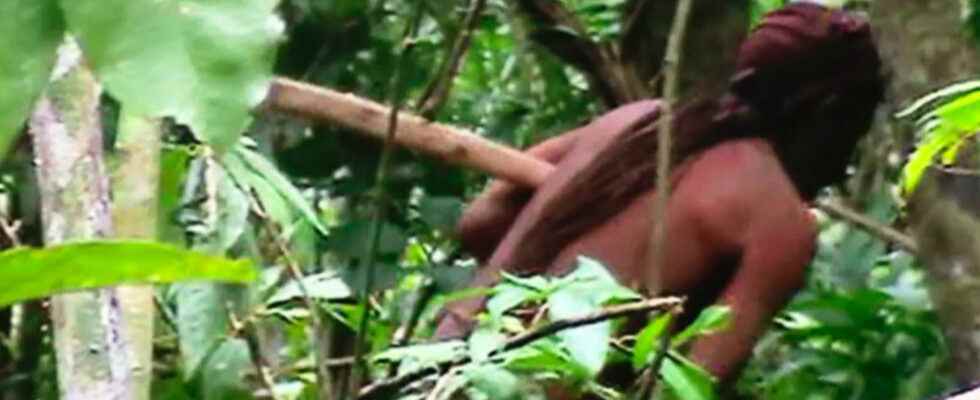Also known as “Indio do buraco” (“Indian of the hole”), due to his habit of digging deep holes in the huts where he lived, he was the last survivor of a small tribe, targeted by massacres perpetrated by armed men presumably hired by landowners seeking to exploit the forest.
For more than two decades, he lived in total isolation in the Amazon rainforest, subsisting on nuts, fruits and hunted animals. Found dead at the end of August in a hammock, the one who was known as the “Indian Tanaru” symbolized the resistance of the natives of the Brazilian Amazon in the face of deforestation and mining. The news of the death of this man, of which very little is known, went around the world.
Also known as “Indio do buraco” (“Indian of the hole”), due to his habit of digging deep holes in the huts where he lived, he was the last survivor of a small tribe, targeted by massacres perpetrated by armed men presumably hired by landowners seeking to exploit the forest. Authorities have not reported any signs of violence to explain his death and assume it was “natural”. His body was found in his hut on August 23, covered in macaw feathers, according to local media.
Mysteries of the hole
The Tanaru indigenous land extends over 8,000 hectares of virgin forest within the state of Rondonia, on the border with Bolivia. Surrounded by vast cattle ranches, it is under constant pressure from illegal ranchers and loggers, as well as mining operators, in one of the most dangerous regions of Brazil, according to the NGO Survival International. The ‘Hole Indian’ was first spotted in 1996 by the film crew of a documentary that accompanied a team from Brazil’s government agency for indigenous affairs (Funai) investigating the massacre of his tribe .
Footage reported in the documentary “Corumbiara” (2009), by Vincent Carelli, shows a wary native peering from an opening in his thatched roof hut at his visitors, before brandishing a spear menacingly, without any sound. out of his mouth. Teams from the Funai came back several times to meet him, accompanied by representatives of neighboring tribes, in an attempt to learn more about him and his lost tribe. But the native has always clearly shown his desire to remain isolated. Feeling threatened, he had even one day shot an arrow, seriously injuring a member of the Funai.
“
One can only imagine what this man was thinking
“
“One can only imagine what this man was thinking, living alone, not speaking with anyone, and very frightened by any stranger who for him represented a potential threat”, reacts to AFP Fiona Watson, director of the NGO Survival International. The Brazilian authorities subsequently limited themselves to patrolling his territory in search of signs indicating that he was still alive. The last image of him, filmed in 2011 but released seven years later, shows him half-naked chopping down a tree with an axe.
In addition to the bows and arrows found indicating that he hunted, authorities also found orchards, “perfectly well maintained”, according to Fiona Watson, where he appeared to grow fruits and vegetables including papayas and cassava. But what has always fascinated experts the most are the holes he dug, some reaching up to two meters deep and equipped with sharp spears in the bottom.
According to Funai, the “Indian Tanaru” would have built 53 huts in the forest, all made in the same style: in thatch with a single door and always with a hole inside, which would have been used to trap animals but can -to also be of shelter or to have had a spiritual function. According to Funai, the presence of isolated indigenous groups in Brazil has been detected in 114 different places. An assessment that varies, however, according to the reports.
